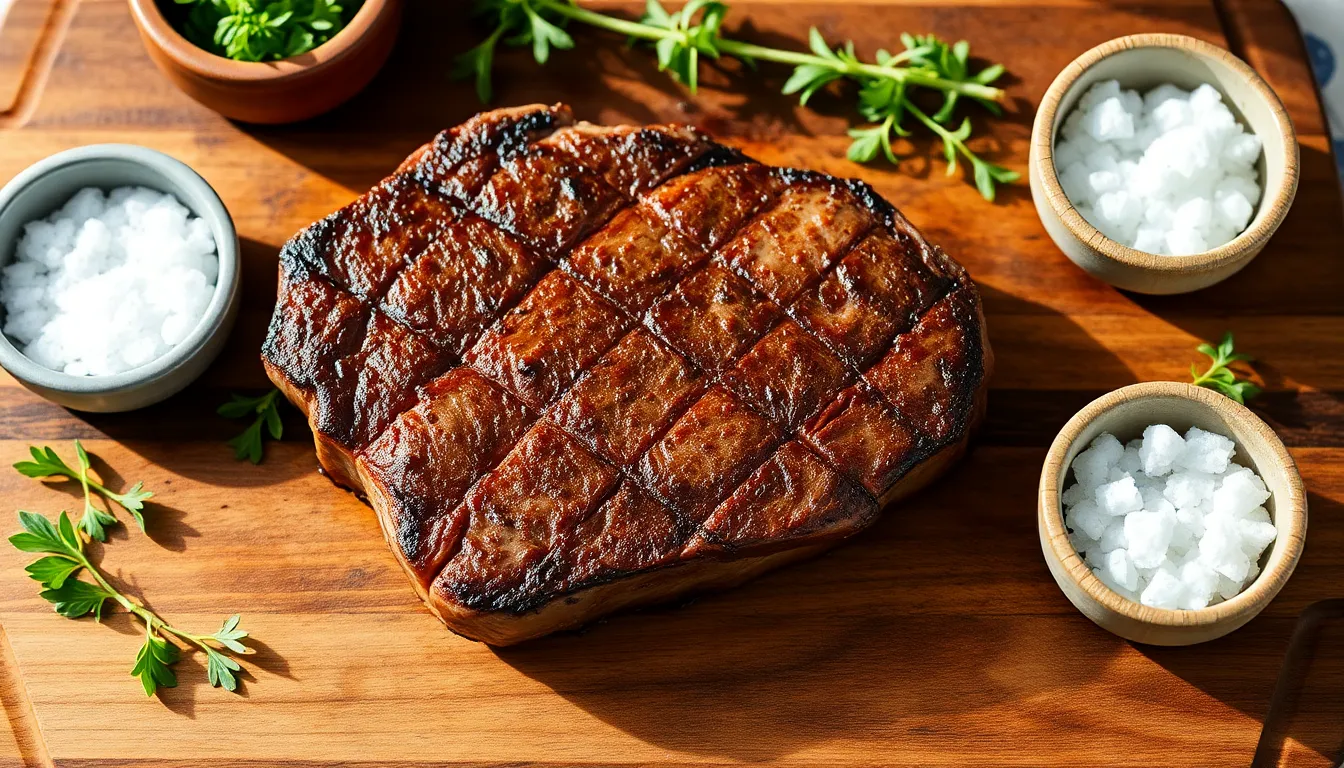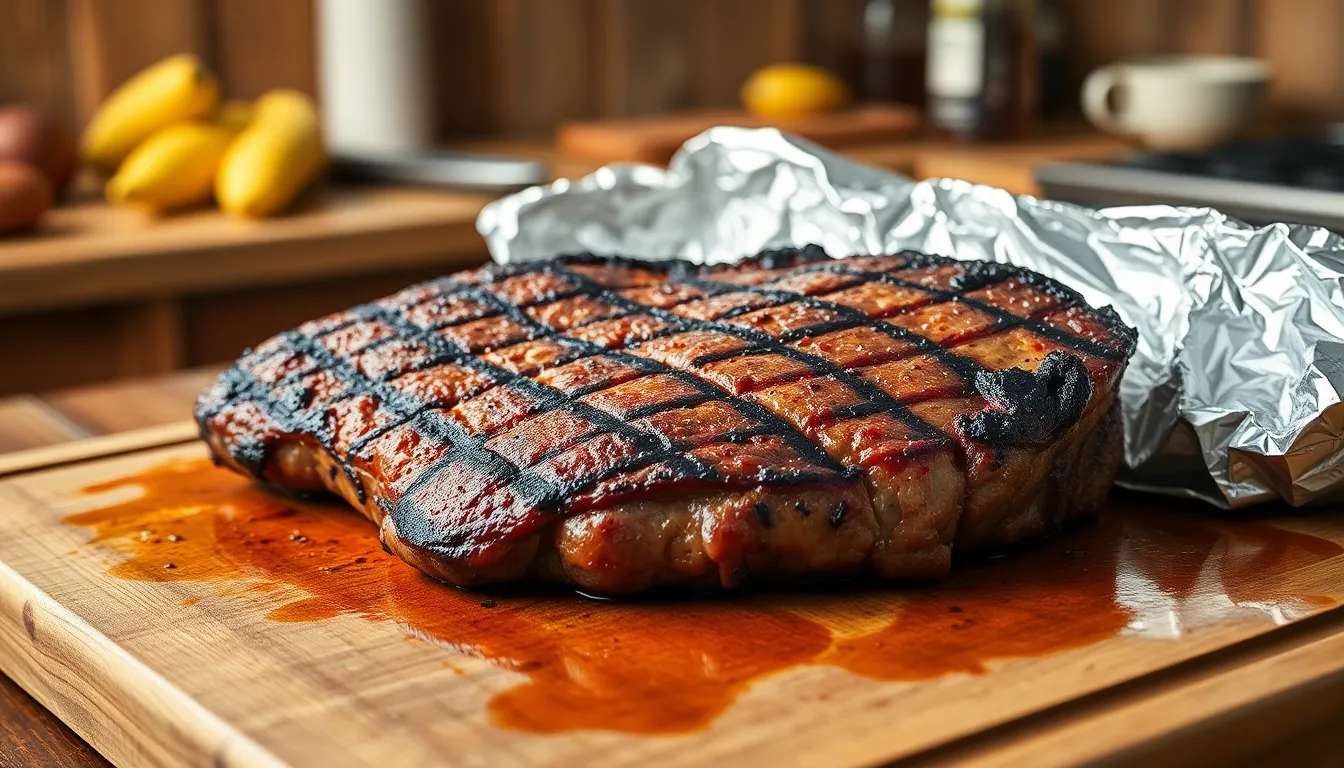When it comes to cooking the perfect steak, timing is everything. Many people focus on achieving the ideal sear and doneness but overlook a crucial step: letting the steak rest. This simple yet essential process allows the juices to redistribute, resulting in a more flavorful and tender bite.
So, how long should a steak really rest? The answer isn’t one-size-fits-all and can depend on the steak’s thickness, cooking method, and personal preference. Understanding the science behind resting can elevate any steak dinner from good to unforgettable. In this article, we’ll explore the best practices for resting steak and provide tips to ensure every bite is juicy and satisfying.
Table of Contents
ToggleImportance of Resting Steak
Resting steak plays a vital role in the overall cooking process. This step significantly impacts the flavor and texture, making each bite more enjoyable.
Improves Flavor
Resting allows juices to redistribute throughout the steak, enhancing flavor. As the meat cools slightly, the proteins relax, leading to a richer, more robust taste. Steaks that rest typically show improved moisture retention, preventing dryness during slicing.
Enhances Tenderness
Resting also enhances tenderness by allowing fibrous proteins to break down. This breakdown results in a more succulent texture, making the steak easier to chew. A rest period of 5 to 10 minutes for thinner cuts and up to 20 minutes for thicker cuts optimizes tenderness, ensuring a satisfying bite.
Factors Influencing Resting Time

Resting time varies based on several factors that impact the quality of the steak. Key considerations include the type of steak and cooking method.
Type of Steak
Each steak cut has distinct characteristics that influence resting time.
- Thickness: Thicker cuts, like ribeye or porterhouse, need longer resting periods of 10 to 20 minutes to allow juices to settle and redistribute.
- Texture: Lean cuts, such as filet mignon, can rest for shorter periods of 5 to 10 minutes because they contain less fat, requiring less time for moisture retention.
Cooking Method
The approach taken during cooking significantly dictates resting time.
- Grilling: Steaks cooked on a grill retain more heat, often requiring 5 to 15 minutes of resting based on thickness.
- Pan-searing: Pan-seared steaks benefit from a 5 to 10-minute rest, as the residual heat continues to cook the steak gently.
- Sous vide: Steaks cooked sous vide only need minimal resting since they maintain even temperatures throughout, typically resting around 5 minutes.
Understanding these factors ensures the perfect resting duration, enhancing flavor, and tenderness in every steak.
Recommended Resting Times
Resting steak enhances flavor and moisture retention. Recommended times vary based on steak cut, thickness, and cooking method.
General Guidelines
Resting times typically range from 5 to 20 minutes. Thinner cuts, like flank or skirt steak, usually require 5 to 10 minutes. Thicker cuts, such as ribeye or T-bone steaks, benefit from 10 to 20 minutes of resting. The internal temperature continues to rise during resting, increasing tenderness as juices redistribute evenly.
Differences by Steak Cuts
- Thinner Cuts: Cuts such as flank, skirt, or flat iron should rest for 5 to 10 minutes. Less resting time counts as juices don’t have as far to travel.
- Medium Cuts: Sirloin and strip steaks can rest for about 7 to 12 minutes. This period allows for satisfactory juice redistribution.
- Thicker Cuts: Ribeye and porterhouse steaks need 10 to 20 minutes to optimize tenderness. Longer resting ensures juice absorption throughout the meat.
- Lean Cuts: Filet mignon requires a shorter rest of about 5 to 10 minutes, since its tenderness benefits from quicker serving.
- Cooking Method Variances: Grilled steaks can rest for 5 to 15 minutes, while pan-seared steaks are best rested for 5 to 10 minutes. Sous vide steaks typically achieve optimal flavor and texture with just a 5-minute rest.
Understanding these guidelines ensures a perfect steak experience every time.
Tips for Resting Steak
Resting steak requires specific conditions and awareness of common mistakes to maximize flavor and tenderness. Following these guidelines ensures a satisfying dining experience.
Ideal Resting Conditions
- Temperature: Keep the steak in a warm environment. Room temperature helps retain heat without overcooking.
- Cover: Use aluminum foil loosely over the steak to trap warmth while allowing steam to escape. This prevents sogginess.
- Surface: Place the steak on a cutting board or plate. Avoid metal surfaces, as they can draw heat away from the meat.
- Humidity: Ensure the resting area has low humidity. High moisture levels can make the crust wet and less appealing.
Common Mistakes to Avoid
- Not Resting Enough: Skipping or shortening the resting time leads to juices running out when cutting, resulting in dry meat.
- Covering Tightly: Wrapping the steak too snugly traps steam, which creates a soggy exterior. Use loose coverage instead.
- Serving Immediately: Cutting into the steak right after cooking interrupts the juice redistribution, affecting flavor and tenderness.
- Ignoring Thickness: Failing to adjust resting time based on steak thickness can compromise the final texture. Always refer to guidelines for optimal resting periods.
Resting steak is a simple yet essential step that can significantly enhance the overall dining experience. By allowing time for juices to redistribute and proteins to relax, the steak becomes more flavorful and tender.
Whether it’s a thin flank or a thick ribeye understanding the right resting time is crucial. Following the recommended guidelines ensures that every bite is succulent and satisfying.
With the right techniques and conditions in place, anyone can elevate their steak game and enjoy a perfectly cooked meal. Remember that patience pays off when it comes to resting steak.




